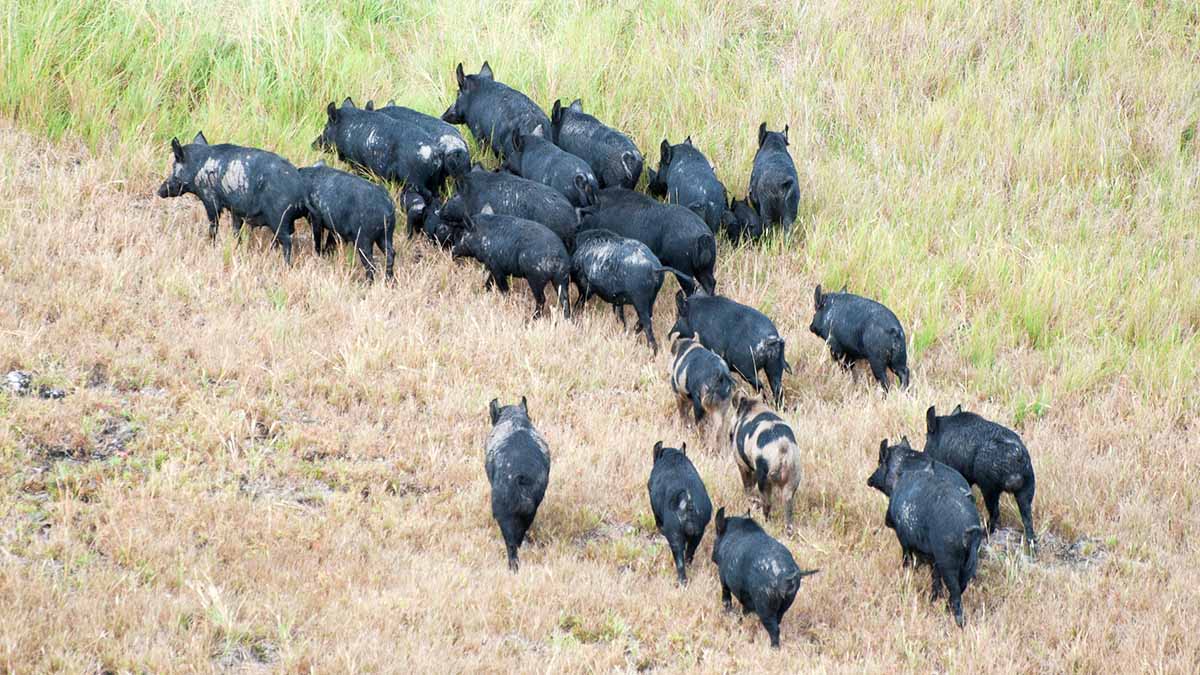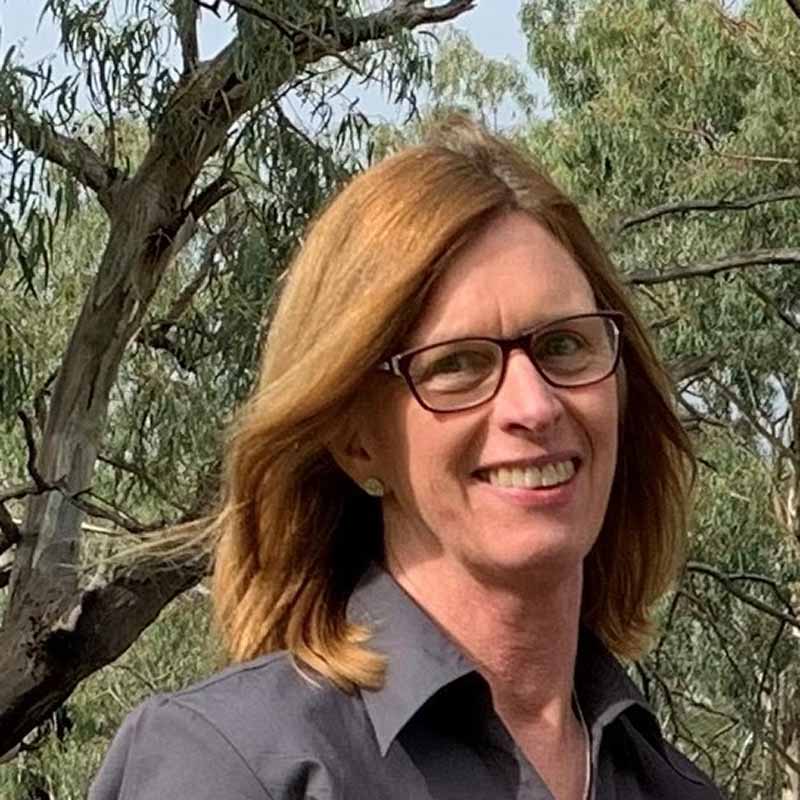Due to the prolific nature of feral pigs and the size of mainland Australia, Dr Channon says the approach to management is to suppress populations, as the goal of eradicating the species completely is impractical.
'Whilst it would be great to achieve, the goal to completely eradicate feral pigs from mainland Australia is generally unrealistic. We are dealing with a very clever, resilient and adaptable species,' she says. 'We can perhaps get to a local eradication, but in most areas, we aim to suppress populations and to maintain those oppressed populations over time.'
The main methods of population control are baiting, trapping and aerial shooting.
Pig Fact: Feral pigs require a permanent source of water because they don't sweat and therefore need that water to maintain their body temperature.
Whatever management method you choose, Dr Channon says it's important to be strategic and note when you aim to target the pigs, as seasonal conditions could make it easier or harder to manage those populations.
'For example, periods of dry conditions when pigs are congregating around available water, that's a perfect time for feral pig management,' Dr Channon says. 'It's much harder when there's a lot of water and food available, and they're spread out in the environment.'
'A better understanding about where feral pigs are in the local landscape at different times of the year - and then trying to understand why they're there - can actually help to focus efforts into these areas as well as inform future management programs.'
While some people turn to exclusion fencing, if the feral pigs are trying to reach food or water behind it, a fence may not be enough to stop them from actively trying to get through the fence, potentially causing damage.
Baiting
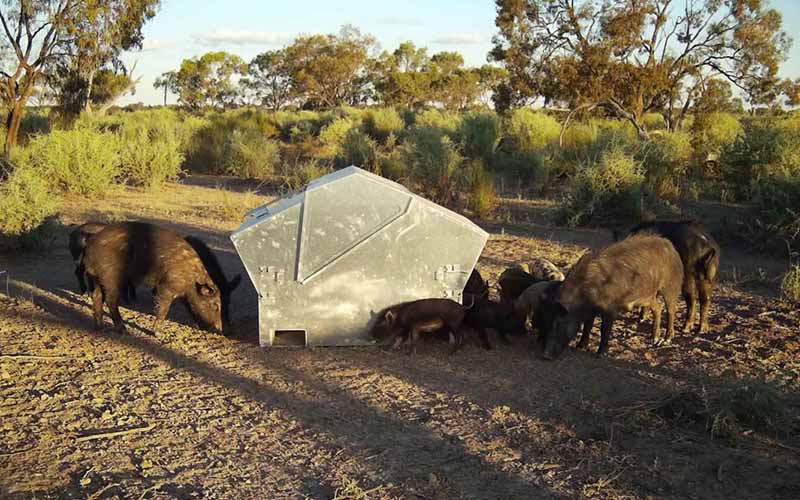 Image courtesy of Murray LLS.
Image courtesy of Murray LLS.
In Australia, pigs can be baited with 1080 or a sodium nitrate bait called Hoggone, which has been deemed a more humane choice of poison for feral pigs.
For successful baiting, pigs need to be trained with 'free feeding', where they are regularly fed with non-toxic grain to draw the maximum number of feral pigs to the site. Finding the right spot to promote free feeding is also important, and land managers need to identify areas where pigs might encounter the food.
That's part of the challenge here; lots of patience is required for free feeding before laying the bait.
'It may take even up to 21 days for the full group of pigs in the environment to come and free feed,' Dr Channon says. 'It's really important here that people are really patient and don't jump the gun because the wise ones are watching, so it's a matter of making sure you've got the entire group in there, including the wise, older sows.' 'That's part of the challenge here; patience is required for free feeding before laying the bait.'
The chemical 1080 (sodium fluoroacetate) is a Schedule 7 poison in Australia. As per state, territory and local government guidelines, mixing or injecting meat baits with 1080 requires accreditation and training. Landholders will need to work closely with local councils or other providers to access 1080-treated baits.
Trapping
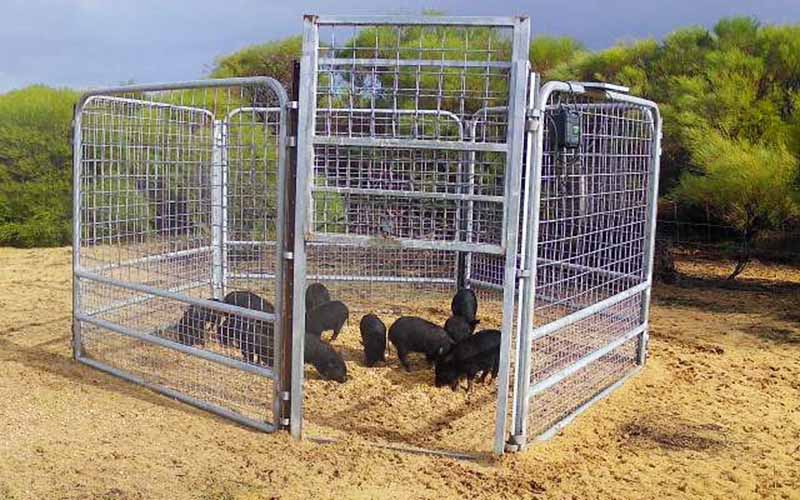 Image courtesy of Midlands Biosecurity
Image courtesy of Midlands Biosecurity
Another common method used for feral pigs is trapping, which also requires training the pigs through free feeding. 'There are different types and designs of traps available; it really comes down to preference from landholders about what type of trap they use,' Dr Channon says. The different types of traps can include designs that make them less likely to impact non-targeted species, such as wallabies.
In some areas of Queensland, they're able to utilise fruit like bananas and mangoes for free feeding because pigs are more familiar with that as a food than grain.
It's important to ensure the trap is big enough to hold an unknown number of pigs, as even with trail cameras, landholders may not have an accurate estimate of the number of pigs present until they're caught.
To read about one North Queensland farmer's experience trapping feral pigs, read our Growing Country story here.
'In some areas of Queensland, they're able to utilise fruit like bananas and mangoes for [free feeding] because pigs are more familiar with that as a food than grain, so that can be part of the strategy,' Dr Channon says.
Shooting
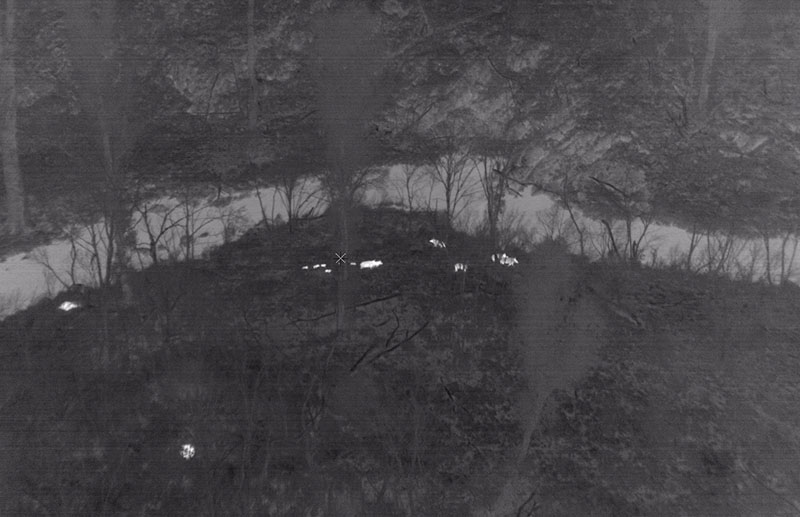 Image courtesy of ACT Government
Image courtesy of ACT Government
Aerial shooting is another effective management method for removing entire groups of feral pigs, but it also requires funding to cover the costs of the helicopter, pilot and shooter.
Some local councils run aerial shooting programs, with co-investments provided by land managers. In other areas, communities might build their own syndicates where landholders contribute money to support a program and hire contractors.
Regardless of which method we utilise, land managers must make sure that we comply with codes of practice and standard operating procedures for the humane control of feral pigs.
Dr Channon says finding experienced pilots and shooters is an important part of the process. The codes of practice and standard operating procedures can also be found on the PestSmart website. 'Regardless of which method we utilise, land managers must make sure that we comply with codes of practice and standard operating procedures for the humane control of feral pigs,' Dr Channon says.
While pig hunting may be a favourite pastime of many Aussies, Dr Channon says it depends on the circumstances as to when it's an efficient form of management. 'It comes down to the size of the problem in the area,' she says. 'If there are only a few animals present, then this type of approach may be suitable to remove those individuals.' If hunters want to enter private property, they must obtain permission from the landowners and adhere to the biosecurity rules.
Dr Channon says the risk is that hunters or shooters on the property could scare the pigs away from any ongoing baiting or trapping programs, wasting resources, time and money.

